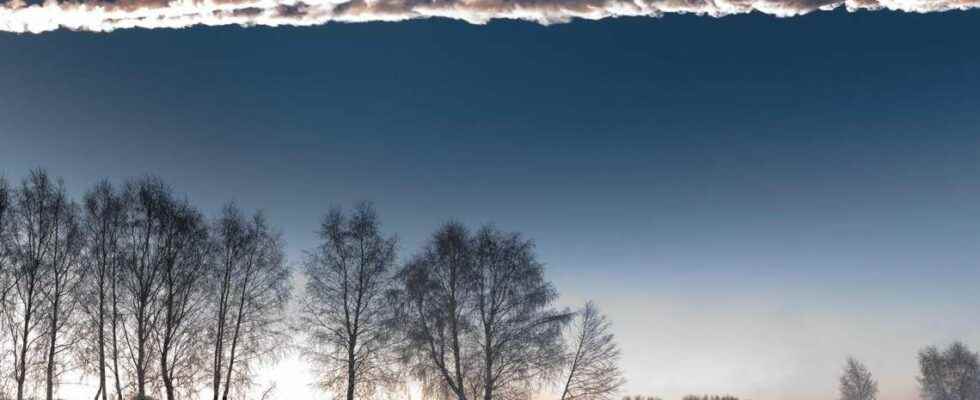On September 15, 2013, a meteor 18 meters long and weighing approximately 11,000 tons crossed the skies of Russia before disintegrating at an altitude of 23 kilometers above the city of Chelyabinsk, in the south of the country. The very powerful shock wave caused a lot of damage, exploding the windows and Windows buildings in the region. The energy released during this explosion was indeed estimated at 30 times the power of the Hiroshima bomb. It is thus the largest known event of this type since the fall of the object above Tunguska (Siberia) in 1908, including the explosion in theatmosphere had razed a forest over a radius of 20 kilometres.
In both cases, the disintegration of the meteorite at altitude avoided a collision with the earth’s surface which would certainly have resulted in a much more dramatic catastrophe, reminding humanity that we are continuously exposed to this type of risk, which is currently unpredictable.
A large plume of meteoritic dust
The entry into the atmosphere of the so-called Chelyabinsk meteorite, and in particular its explosion, have been widely documented by numerous amateur videos, which have enabled scientists to reconstruct the trajectory of the meteorite and define its characteristics.
But to study it more precisely, nothing better than finding fragments. But this is not so obvious. When a meteorite enters the Earth’s atmosphere, the heating it experiences usually leaves behind a small amount of dust. The meteorite then usually ends up “burning up” almost completely before hitting the ground. It is often very difficult to find this very fine dust sprinkled on the landscape of a large area.
However, in the case of the Chelyabinsk meteorite, the relatively large size of the racing car produced a large plume of dust that remained suspended in the atmosphere for several days, allowing easier collection of these tiny particles. Much larger fragments were also discovered in the months that followed. A piece of about 570 kg was thus brought up from the bottom of Lake Chebarkul. Analysis of these residues showed that it was a ordinary chondrite (rocky meteorite).
Strange and exotic graphite crystals
But it was by analyzing the small specks of dust that Russian scientists made a fortuitous and surprising discovery. Under’eye from microscopea new type of crystal has indeed been observed. Very small in size, a few micrometers only, these crystals come in two distinct forms hitherto unknown on Earth: some have an almost spherical shape and others have the shape of a hexagonal rod. X-ray analysis reveals that they are in fact crystals of graphiteone of the crystal forms of carbonthe same one that is still commonly used in our pencils.
But these crystals have an additional feature. They contain in their center a carbon nanostructure which could be a buckminsterfullerene, a molecule spherical composed of 60 atoms of carbon and which comes in the form of a soccer ball (hence its nickname footballene). This nanostructure could also be polyhexacyclooctadecane, a molecule composed of carbon and hydrogen.
A specificity of the Chelyabinsk meteorite?
The very exotic architecture of these crystals suggests that they were formed under conditions of high temperature and high pressure, which could correspond to the moment of the fragmentation of the meteorite in the Earth’s atmosphere. However, the exact mechanism of their formation remains to be elucidated. These results were published in the journal The European Physical Journal More.
The next step is now to find out if these crystals are specific to the Chelyabinsk meteorite or not, by looking for their traces in dust samples from other meteorites.
Interested in what you just read?
